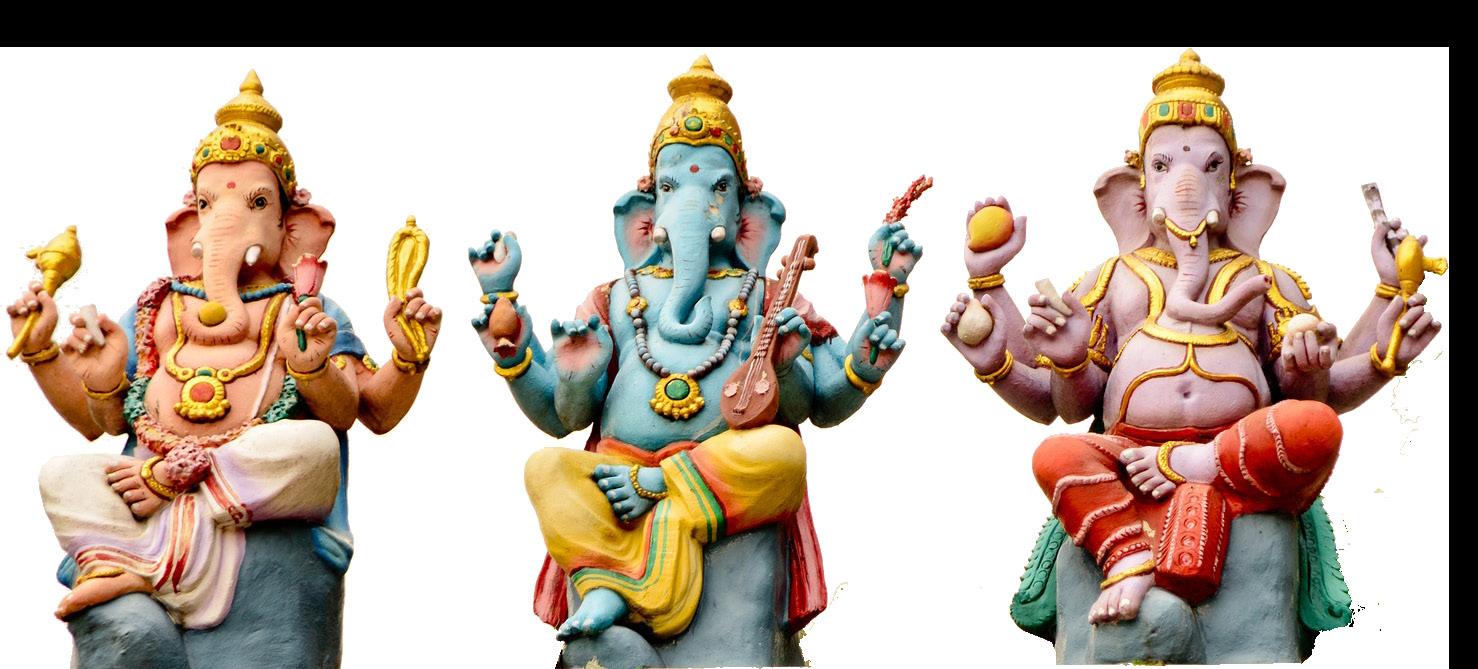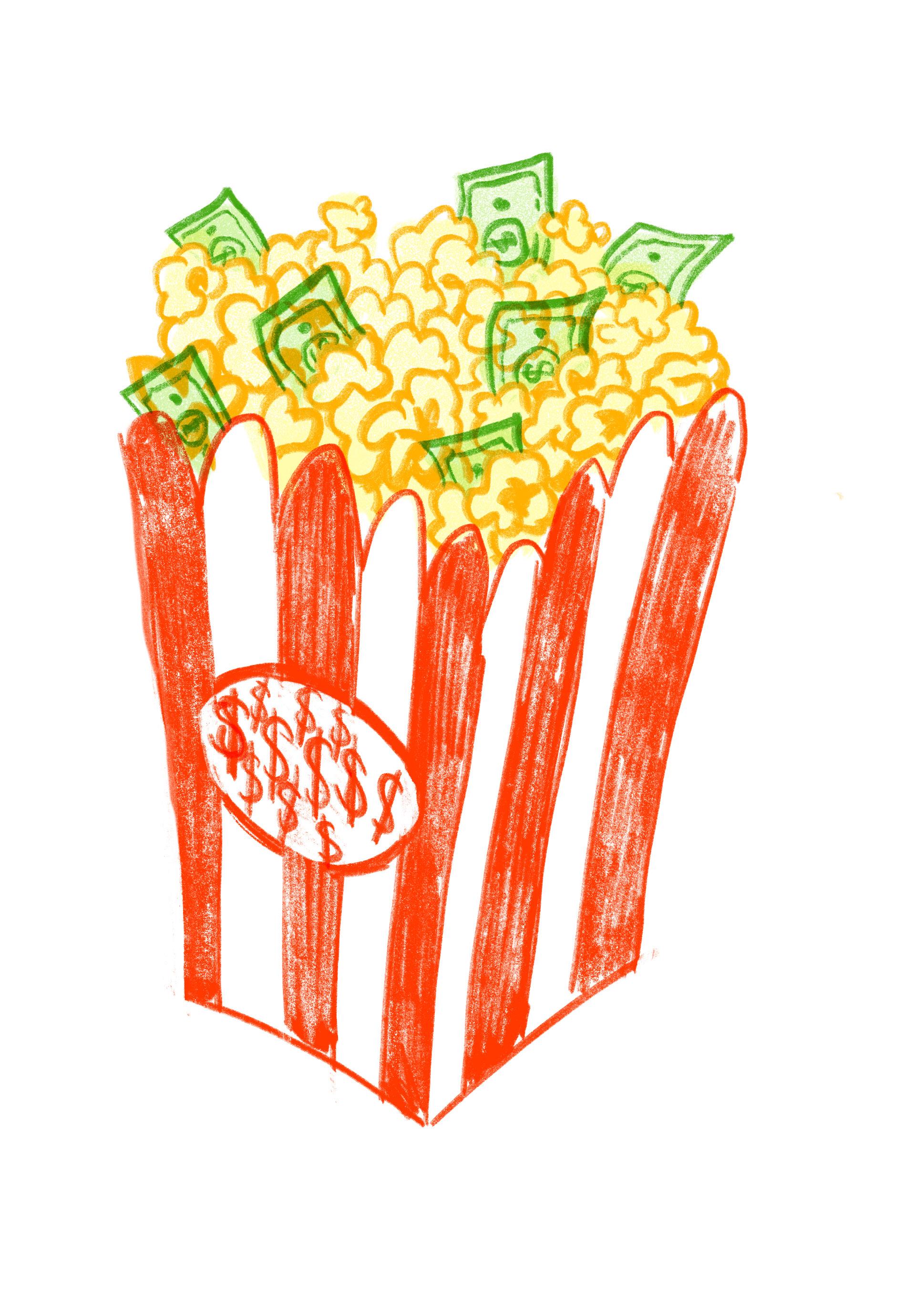
4 minute read
From Parvati to Picasso
from The WALK Spring 2020
by The WALK
AN EXPLORATION OF SURREALISM IN HINDU ARTWORK
There’s something uniquely sublime in the surreal. Like reading a storybook but with every other chapter ripped out, or trying to assemble a puzzle but with each piece the same color. Perhaps even the stylistic equivalent of dividing by zero. I find myself drawn to the aesthetic not because it represents the unknown but rather because of my inexplicable familiarity with it. To me, surrealism is evoked not only through melting clocks or landscapes of unbalanced perspectives, but also through the fantastical iconography of my Hindu heritage. I grew up surrounded by a world of motifs seemingly absurd to the unfamiliar eye: the coalescence of man and animal in depictions of deities like elephant-headed Ganesha and lion-headed Narasimha; the flippant disregard of the rules of anatomical proportion in the drawings of the ten-headed villain Ravana; the vibrant blue skin of Krishna and Vishnu. These images, found everywhere from Indian children’s comic books to miniature statues resting on every Hindu family’s mantle, illustrate how the aesthetic of the surreal transcends time, geography, and culture. Here, I aim not to confine Hindu art to the Western-constructed label of “surrealism”, nor to trivialize it as a spectacle or exhibition of exoticism. Instead, I seek to expand surrealism as a category to include varied cultural viewpoints and to celebrate the otherworldly elements of the Hindu aesthetic. Surrealism has existed in Indian art from time immemorial. According to renowned Indian art critic Sovon Som, surreal aesthetics reflect the “human predicament in the Indian sensibility.” Artists then and now preserve the history and mythology of the world’s oldest religion through iconography both profoundly alluring and beautifully bizarre. The religiosity of the art form is a critical part of its construction, and its storied history lends it even more significance. Look closely in the Vedas (or if you happen to have a Hindu grandmother, ask her) and you can find an explanation of why things appear so odd: the god Shiva achieved his blue complexion as a consequence in the creation of the universe, and the villian Ravana’s ten heads come from a sacrificial ritual gone awry.
Advertisement
The rich history behind the visual aesthetic evokes a deeply personal experience, providing a means of solace to those who seek to be grounded by a higher purpose. Spirituality and art have always been intertwined, and Hindu tradition is no exception. I myself have fond memories of celebrating festivals in my youth, sitting next to my mother as she taught me how to draw rangoli, the geometric patterns chalked at the doorstep of a residence to symbolically welcome gods inside. Though my designs were amateur, I had always found the process meditative, not unlike that of the art of mandala. Mandala patterns, so popularly found as For Hindu and tapestries in college dorm rooms, date back Western artists to Hindu and Buddhist practices of meditation alike, depicting the and ritual practice from the first century. The surreal was a way abstract nature of these images helps provide escape from the realities of the material world, allowing for an odd sense of constancy amidst the to weave meaning in a world in which reason eluded them. chaos of reality.
European surrealists may have aimed to evoke similar feelings in their own work, which formally emerged as an artistic movement during the aftermath of the first world war. As noted by museum curator Mark Scala, artists imbued their pieces with the “language of dreams, free association, and Freudian psychoanalytic theory,” in order to “help transform both themselves and a society that seemed inescapably bound for fascism and war.” Perhaps processing this turmoil through creation was its own unique mode of spirituality for these artists; a way to craft their own mythology by paying homage to themes and motifs of everyday life. For Hindu and Western artists alike, depicting the surreal was a way to weave meaning in a world in which reason eluded them.
Despite their disparate origins, surrealist artworks from around the world share several nodes of common ground. A common motif found in Hindu iconography is the idea of dualism: Shiva, one of the holy triumvirate of gods, and Parvati, his consort, are famously depicted as the same being, called Ardhanarishvara. Without Shiva’s masculinity and Parvati’s femininity, the being is incomplete, highlighting the harmonious balance of the two sexes. Perhaps Rafał Olbiński was thinking along similar lines when creating “Tales of Love (Hat)”, a Magritte-inspired illustration of the intersection of masculine and feminine faces. The contours of man and woman, joined as one, ask us to ponder whether we can truly draw a line between them.
The two movements of art also show similarities in technique, such as the use of the color as a vehicle for symbolism. A prominent example is the color blue, which Pablo Picasso employed almost exclusively in a series of artworks spanning the years 1901-1904. The color imparted
a melancholic tone to the illustrations, reflecting the artist’s somber mood during a particularly difficult part of his life. The symbolism of the color is also significant in Hindu art, but for a different reason: blue signifies divinity, righteousness, and proximity to heaven, as represented through the azure skin tones of prominent deities.
If for nothing else, surrealism allows us to truly appreciate the range in imagination of the human mind. Interpreting the absurd—or simply just leaving it uninterpreted—is a universal challenge. Unlocking the surrealist gaze may not come easy, but the ability isn’t limited solely to a few elite artists from the twentieth century. Undercurrents of the surreal exist everywhere: in the vibrant iconography of Hindu mythology, yes; but also in the mythical beasts of Abrahamic religions, the impossible perfection of Islamic geometric art, and through facets of every culture known to man. All it takes is a moment to close our eyes and dissolve the illusion between real and surreal.
BY: VARSHINI GALI C’20








